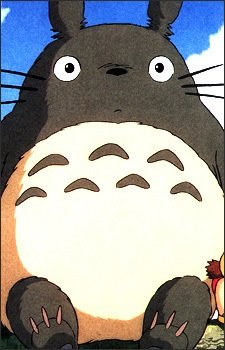Series & First Appearance
Totoro first appeared in the anime film My Neighbor Totoro (Tonari no Totoro), released on April 16, 1988. The film was written and directed by Hayao Miyazaki and produced by Studio Ghibli. While Totoro is not part of a series, the character has become synonymous with Ghibli’s brand and is often featured in various merchandise and media related to the Studio.
Profile at a Glance
Totoro appears as a large, friendly spirit of the forest with characteristics resembling that of a cat and a bear. Although he does not have a defined age, his timeless presence suggests a profoundly ancient nature. He serves as a primary ally to the film’s protagonists, Satsuki and Mei, and symbolizes the nurturing aspects of nature. As a forest deity, Totoro possesses abilities related to the natural world but lacks traditional weapons.
Personality & Motivations
Totoro embodies warmth, wisdom, and playfulness. He is often characterized by a gentle demeanor, a mysterious aura, and a childlike curiosity. Totoro’s primary motivation is to protect and nurture the natural environment and its inhabitants, particularly the film’s young protagonists. He exhibits a serene confidence, with notable quirks such as a playful interaction with creatures like the Catbus and a unique ability to communicate through sound rather than speech.
Abilities / Powers
Totoro has several standout abilities:
- Forest Guardian: He possesses a strong connection with flora and fauna, able to nurture plants and summon rain.
- Transport: Totoro can utilize the Catbus for travel, showcasing his connection to other woodland spirits.
- Shape-shifting: He can alter his appearance slightly, adapting to the needs of situations or the emotions of those around him.
While Totoro is a comforting presence, his vulnerabilities include a flawed understanding of human emotions, which sometimes leads to misunderstandings.
Major Story Arcs & Growth
In My Neighbor Totoro, Totoro’s most significant role emerges as he helps Satsuki and Mei navigate the challenges of their new rural home and their mother’s illness. His introduction occurs when Mei first encounters him while exploring the forest. Throughout the film, he aids the girls in various ways, such as when they plant acorns to grow a giant tree, fostering a sense of wonder and connection with nature. Notably, the iconic scene where Totoro summons rain through his “puddle dance” affects both the characters’ growth and the movie’s emotional spectrum, reflecting themes of childhood imagination.
Notable Relationships
- Satsuki Kusakabe: Satsuki acts as a primary human ally, and their bond demonstrates the protective instincts Totoro has toward children.
- Mei Kusakabe: Mei’s initial encounter with Totoro sets off a series of adventures, establishing their deep friendship rooted in innocence and curiosity.
- Catbus: This whimsical creature serves as transportation for Totoro and signifies his connection to the magical realm of the forest.
Iconic Moments & Quotes
One of the film’s most memorable moments occurs when Totoro, Satsuki, and Mei share an umbrella during a rainstorm. This reflects the nurturing bond that forms between them and emphasizes themes of companionship and resilience. While Totoro does not speak in conventional dialogue, his various vocalizations and sounds resonate with audiences, becoming iconic in their own right. His presence marks pivotal emotional turns, especially during scenes that heighten the sense of wonder and family connection.
Trivia & Behind-the-Scenes
Totoro’s design was heavily influenced by Hayao Miyazaki’s love for nature and Japanese folklore. The character is often seen as an embodiment of "Yōkai" (spirits) in Shinto beliefs. Voiced in the original Japanese version by actor Hitoshi Takagi, and in the English dub by Dakota Fanning (as Mei) and later by authors and illustrators for merchandise, Totoro has transcended language and culture.
The film’s popularity is evident, as Totoro has ranked among the most beloved characters in numerous fan polls. The character has become a cultural icon, showcasing the deep connection between nature and humanity in a way that resonates with audiences of all ages.
In terms of merchandise, Totoro’s image can be found in countless forms, from plush toys to clothing lines, signifying his wide appeal. A dedicated fan base, with over 3,500 favorites listed, underscores his status in anime culture, solidifying Totoro as not just a character but an enduring symbol of childhood wonder and the importance of nature.







